Black bears can have a coat of many colors in Alaska
While working as a naturalist in Southeast Alaska this summer, I learned so much about the vastly different flora and fauna found in the temperate rainforest that we were traveling through. But even more eye-opening was when I experienced wildlife common to New England in a totally different way. One species we frequently encountered that I now see in an entirely different way is the black bear.
When you go to Alaska you expect to see brown bears (the coastal name for grizzly bears), but we saw just as many black bears. Those of us from the East Coast were not too excited by our encounters with black bears. We were jaded. We all had stories of black bears ripping down our bird feeders or hanging out on our back porches. We were there to see the iconic Alaskan brown bears.
Nature News: Kingfishers a harbinger of the halcyon days of summer
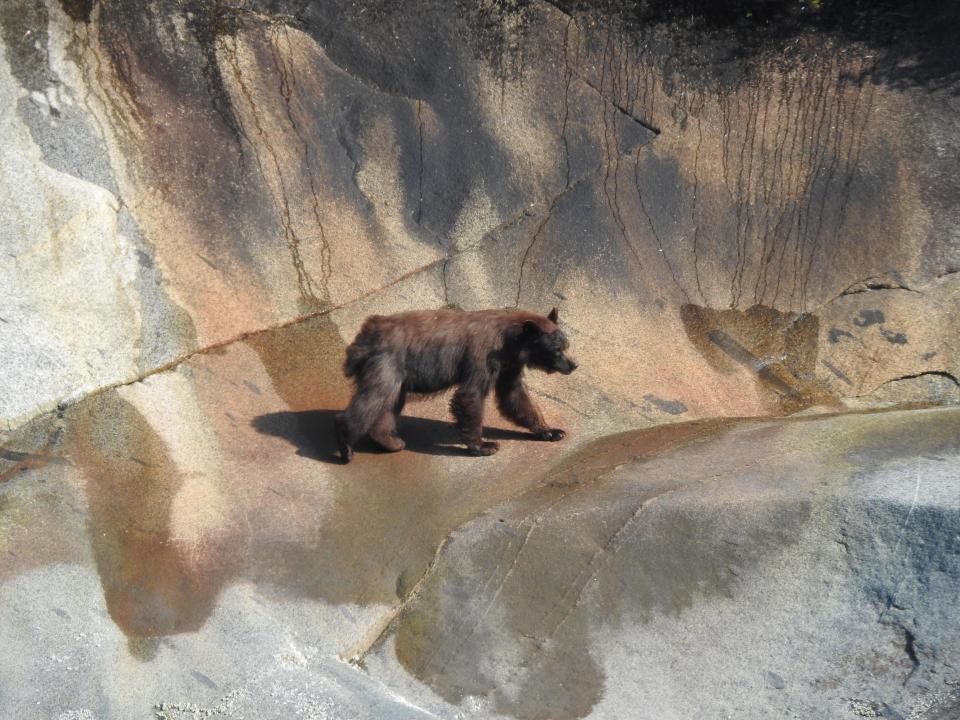
However, with time we began to appreciate just how wild these bears were compared to our suburban black bear neighbors. In Alaska, we watched black bears coming down to the intertidal to eat barnacles and mussels or flip up rocks to catch all the interesting crustaceans that live underneath. This was a far cry from our bird-feeder plundering backyard bears.
Black bears (Ursus Americanus) are found throughout most of North America – from northern Mexico up to the treeline in Canada and Alaska. Black bears are the smallest of North America’s native bears (black, brown/grizzly and polar), and are the only bear found in the eastern United States.
Rapid decline: What you can do to help save the monarch butterfly. Yes, it is endangered.
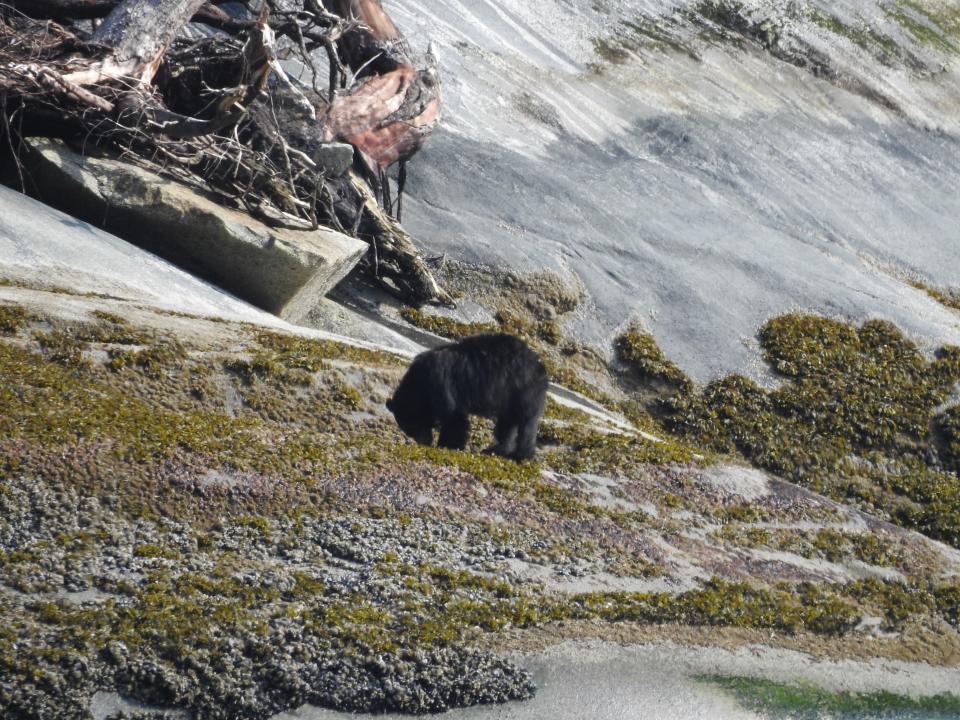
East Coast black bears are usually black, but out west black bears come in a host of colors - anywhere from black to brown to blue/gray to white (the rare and elusive ‘spirit’ or Kermode bear). In fact, black bears have more coat color variation than most North American mammals! One has to wonder what name black bears would have been given by European settlers if first encountered on the West Coast.
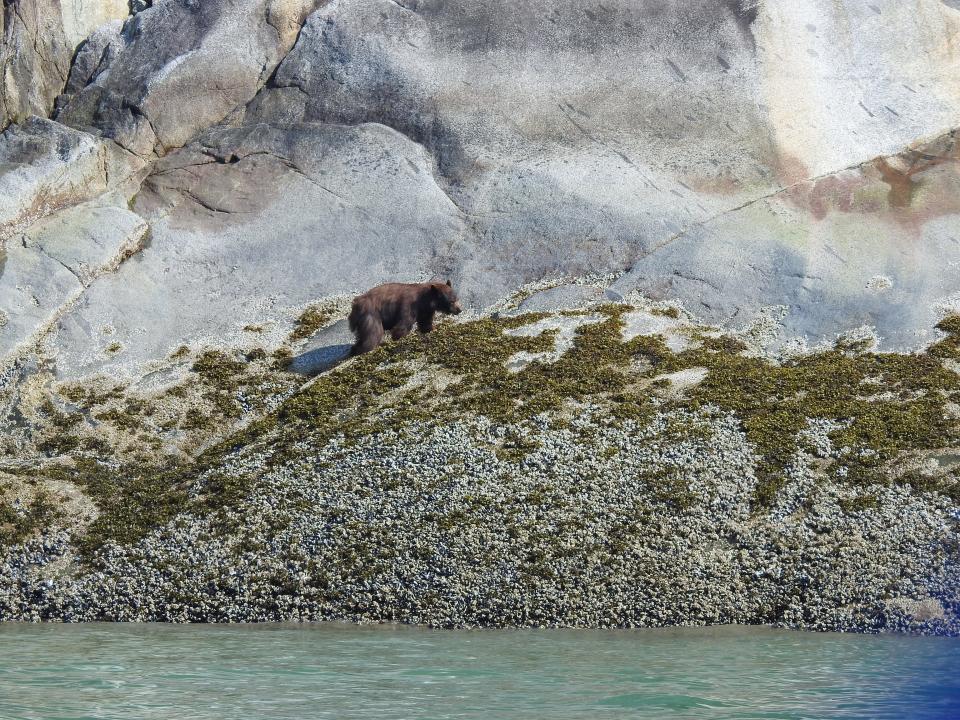
The actual reason for these different color phases isn’t known, but there are several plausible theories. The darker black bears are better camouflaged in our deep East Coast woods. Out west where their habitat includes more big open meadows, lighter colors could provide more camouflage as well as some protection from the more intense solar radiation (like wearing lighter colored clothes in the summer). We saw brown black bears in southeastern Alaska, a temperate rainforest where thick coniferous forests stretched from the shoreline up to the treeline, one would think the lighter color could be a liability there.
Another interesting idea posits that the brown coat color is a form of mimicry - making black bears look like their larger, more ferocious cousins, the brown grizzly bears. The best way to tell a grizzly from a black bear is to look for the grizzly’s telltale shoulder hump. Black bears can also be distinguished by having a rump higher than the shoulder, a straight face profile with an often lighter muzzle and tall, somewhat prominent ears.
Nature News: Elderberry hedgerow has benefits for humans and animals
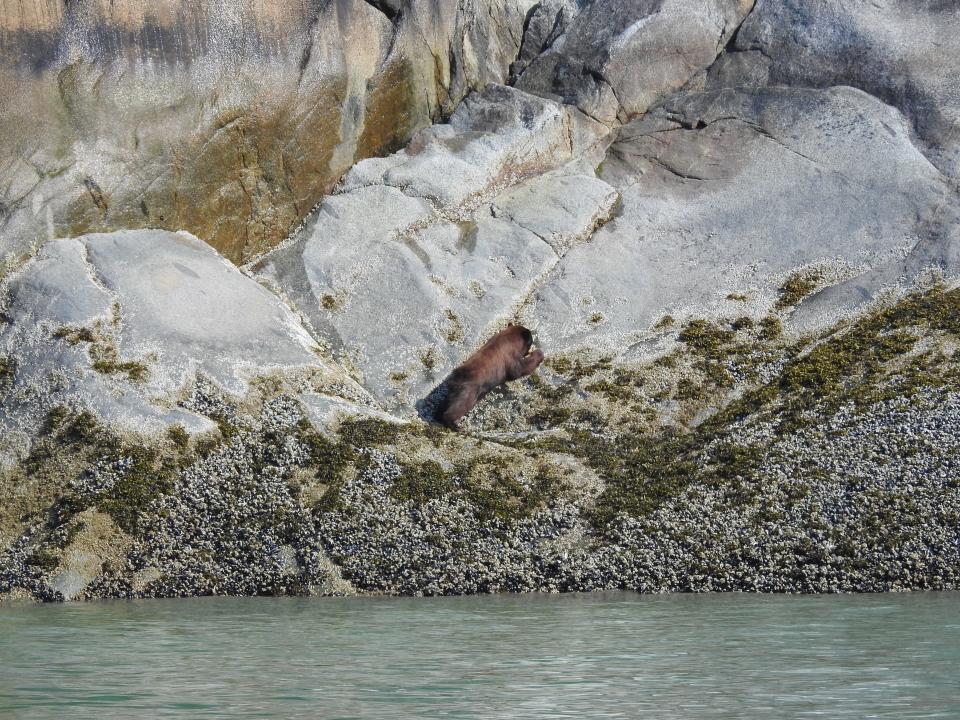
What do black bears eat?
One of the biggest lessons I learned about black bears from my experience in Alaska was just what opportunistic feeders these animals are. Watching them smash barnacles and mussels in the intertidal and then licking them from their paws one minute, contentedly munch on salmonberries the next, then graze on coastal sedges like a deer while waiting for the salmon to run made me realize I don’t really know what they eat in my backyard besides bird food and blueberries.
According to Maine’s Department of Inland Fisheries and Wildlife, “Although bears eat meat, their diet is primarily vegetarian, including early greening grasses, clover, and the buds of hardwood trees in the spring, fruits and berries in summer, and beechnuts, acorns and hazelnuts in the fall. This diet is supplemented with insects, including ants and bees (their larvae, adults, and honey), and occasional mammals and birds. Bears are not considered efficient predators, but they are known to prey on young deer and moose in late spring, and will consume carrion. Bears are intelligent, and adapt rapidly to new food sources, including agricultural crops and food placed to attract other wildlife, such as bird feeders, and untended garbage.”
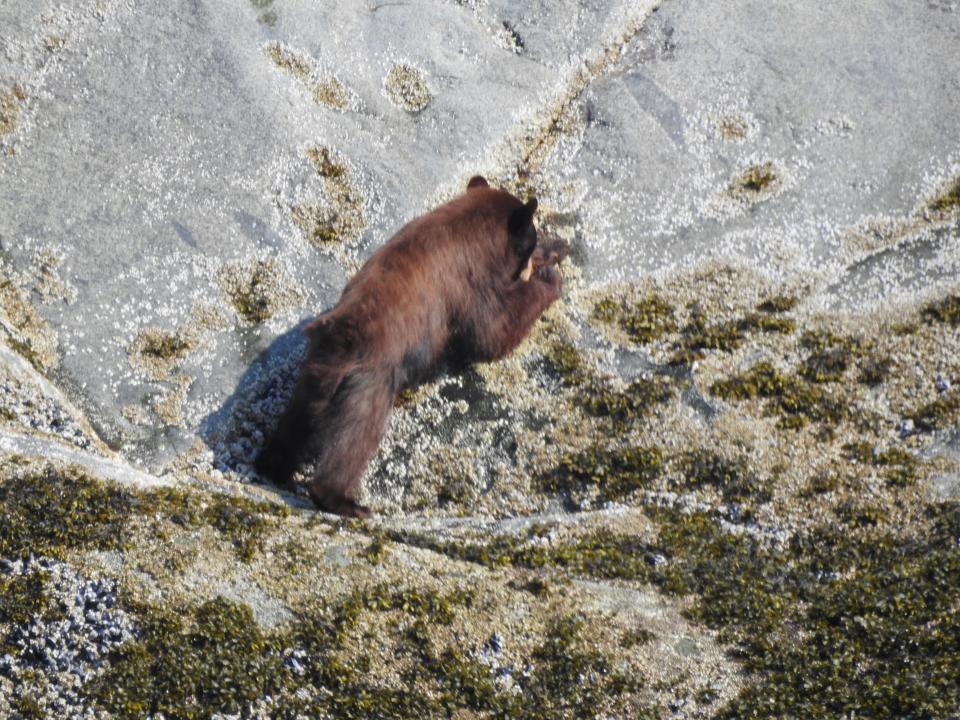
We are slowly heading into fall, a time when bears will be bulking up for their winter-long fast. Females in particular need to put on an enormous amount of fat to support fetal development and milk production. So, if you haven’t done this already, keep a tight lid on garbage and bring in the bird feeders at night if you have a significant bear population in your area. Problems between bears and humans are more likely to occur if we allow bears to become too familiar with us. While I knew this already, because we were out in the wilds with bears so much in Alaska, this became more real. When walking in the woods with bears (both black and brown), we wanted them to leave when they heard us coming, not view us as a potential source of food.

Susan Pike, a researcher and an environmental sciences and biology teacher at Dover High School, welcomes your ideas for future column topics. She is looking for readers to send her the signs of spring they're noticing so she can document them on her website pikes-hikes.com. Send your photos and observations to spike3116@gmail.com. Read more of her Nature News columns online at Seacoastonline.com and pikes-hikes.com, and follow her on Instagram @pikeshikes.
This article originally appeared on Portsmouth Herald: Black bears in Alaska can be in colors of black to white: Nature News

